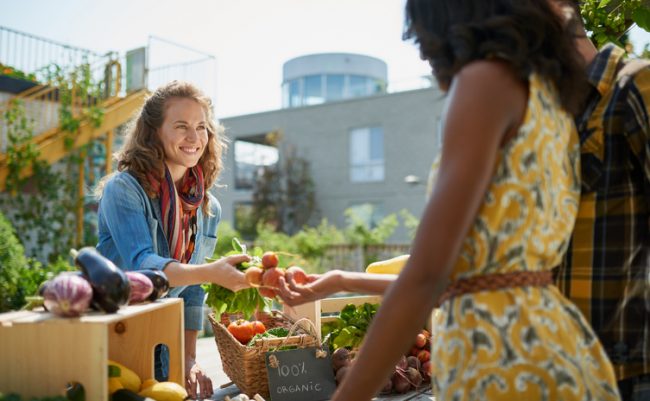
We all know great school systems and access to public parks can amp up real estate values. Did you know access to healthy, innovative eats can have the same impact? A new ULI report shows that access to healthy eats, a focus on “local” choices, and innovative cuisine options can all support a richer real estate value.
The report, Cultivating Development: Trends and Opportunities at the Intersection of Food and Real Estate, examines the meeting of food and real estate from three perspectives: the impact on people, the environment and real estate values.
We already know that proximity to quality grocery stores impacts property values. According to the report, the relationship between food and real estate is stronger than how far you live from Whole Foods.
“The synergy between food and real estate is becoming increasingly evident. Just as food plays a key role in social interaction and creating a sense of community, real estate plays a significant role in shaping how people access and experience food,” said ULI Senior Vice President Rachel MacCleery. “An emphasis on access to healthy food is spurring innovative developments that are enhancing the overall prosperity, sustainability and livability of our communities.”
It makes sense; food brings people together, and has a great impact on how we identify “home.”
The report notes that a growing interest in fresh, accessible food nurtures the communities that surround it and spurs innovation in development projects. Think neighborhood farmer's markets, unique farm-to-table restaurants, community gardens and more.
The study's research also focused on a few innovative food projects and the communities that support them, including the Aria Denver in Denver, Colo. and the Chelsea Market in New York City.
Below are a handful of important highlights from the report:
- Investments in food-related enterprises within the context of larger development projects can support a developer’s bottom line, while also addressing health and environmental goals. Such developments require innovation, creativity, new business models, and inventive partnerships to be successful.
- Restaurants, food halls, markets, community gardens, and farms can serve to create a sense of attachment to development projects, adding value and fostering stronger community social ties.
- Truly successful food-centric development relies on partnerships with established local institutions. By working with existing neighborhood groups, nonprofit organizations, anchor businesses, and small food purveyors, developers have the opportunity to create authentic, culturally relevant projects that support local priorities.
- Community food-growing areas can be differentiating amenities that add value to residential and mixed-use developments at little cost.
- The development community has an essential role in ensuring that places where food is grown, produced, and distributed can adapt to the mounting challenges posed by climate change, high levels of food waste, and fossil fuel dependency.
Healthy foods, healthy real estate markets – a true win-win.
View the full report here.








I can not agree more with the author of the article. And I believe that this is all justified and correct. If you want to eat right, you will not be able to live in the ghetto. Yes it is. Live in the ghetto – eat garbage. Live in an expensive area – eat right and live happily ever after. Everyone chooses his own destiny.
Nobody lives in the slums and goes to restaurants. And none of living in the penthouses does not eat fast food.